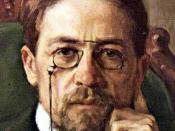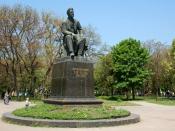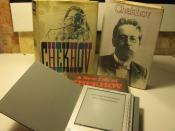I think what I really like about Chekhov is the way he uses words: he does them justice by acknowledging the power they have and the impact they can convey. He lets everything speak for itself, he does not put in frills or excessive wording for added sophistication, and, most importantly, everything has a purpose in his tales.
His pieces feel carefully crafted; every word and every object has been placed there deliberately and not as a space filler, nothing has been overlooked and everything speaks to make it more realistic. Consider the bishop's young niece Katya: Chekhov does not have her knock over several dishes clumsily because he's bored, he does it to enhance the authenticity of the story, and it does. If the dinner scene had happened in real life, the young girl probably would have knocked over dishes, therefore Chekhov illustrates that in his text. One of his most famous pieces of advice stated: If you say in the first chapter that there is a rifle hanging on the wall, in the second or third chapter it absolutely must go off.
If it's not going to be fired, it shouldn't be hanging there. Everything in his work is that rifle.
Because of this we see a lot of symbolism in these stories, particularly in "The Lady With The Dog". The sea is not just a pretty landscape, it is a churning mass of ebb and flow serving to remind Gurov of inevitability, eternity, the mystery of life. The wind on the pier when they wait for the ship to dock is representative of Anna's inner turmoil at their affair and the whirlwind nature of their romance and love. When he returns to Moscow it is beginning to look like winter and feel cold; metaphorically cold...


